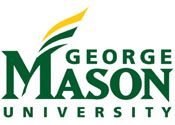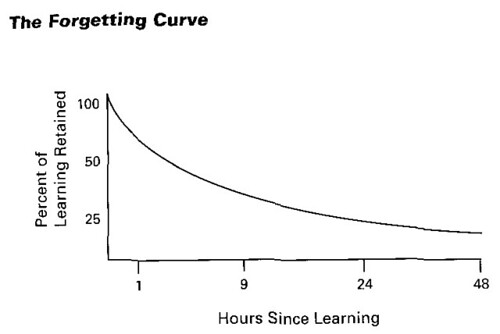 Volume 44 Number 8 September 2005
Volume 44 Number 8 September 2005In Her Own Words: Gloria Gery on Performance
by Tony O'Driscoll and Jay Cross
Fortunate are we who have been inspired by a true visionary. Gloria Gery profoundly shaped the beliefs and work practice us both. As Gloria moves on to developing schools in Nepal and tending failure-to-thrive babies in Romania, we want to acknowledge her work and share her a few of her insights.
Gloria has a knack for diving into a complicated performance issues only to point out what should have been obvious to the rest of us with concise, provocative, and often humorous language. Whenever we heard Gloria speak over the years, we've taken notes, and those notes are the source of the quotations that follow.
Our First Exposure
Tony: I ran across Gloria's book, Electronic Performance Support Systems in early 1994. The first fifty-one pages obliterated all of my paradigms regarding the role of training in organizations. My synapses were rewired and my mental model of learning and performance was forever altered. Throughout my career, Gloria's insights on performance-centered design and electronic support have continued to be invaluable. Had I not been exposed to her insights, I would not have had as much success in helping organizations perform more effectively.
Jay: The first time I heard Gloria's name was a dozen years ago when my company's chairman showed me a copy of Electronic Performance Support Systems and announced that EPSS spelled the death of the training industry as we knew it. Of course, that didn't happen. The ideas were right but ahead of their time. Now, at long last, technology is catching up with Gloria's vision. Her concept of intrinsic EPSS was the forerunner of Workflow Learning, and I was delighted when Gloria accepted our nomination to become the first fellow of the Workflow Institute. The first time I heard Gloria speak, seven years ago, she provided the mantra of my efforts, "Training will either be strategic or it will be marginalized."Now it's time to hear from Gloria, in her own words. Our comments are italicized, the rest is pure Gloria.Systems Design, Training and Performance Support
In her early days at Aetna, Gloria saw workers struggling with arcane, data-centric mainframe systems. The default solution to their frustration was training and documentation. Training Band-Aids designed to camouflage poor interface design. Ironically, the training often cost a lot more than designing the application for performance in the first place.
Most of our existing systems were designed to function in a paradigm of scarcity where each organization unit developed process and applications based on its own history. This parochial approach to work system design has yielded an increasingly disjointed and unintuitive work context for the employee.
Most of our training is compensatory for bad system design and help desks are the balloon payment on poor system design. If we have to teach people how to use a system, it wasn't designed right in the first place. Why do we have training that teaches useless jargon? Why should we have to live with error messages like 'File sharing illegal error?' Look at the evolution of a program like TurboTax. Simplify, simplify.
Learning must be reconceived to influence the primary purpose of organization: to perform effectively and efficiently. We must give up the idea that competence must exist within the person and expand our view that whenever possible it should be built into the situation. What workers need to do their jobs – information, rules, and knowledge – is often spread all over the place. Good design puts these things within easy reach and shows how to use them to optimize performance.
The emergence of a new discipline such as electronic performance support often starts when a few people are frustrated with the mismatch between their needs and traditional approaches to filling them. The purpose of performance support is to help people do what they need to get done, we need to provide whatever is necessary to generate performance and learning at the moment of need.
We don't need new technology, we just need new thinking. We must fuse learning and doing to enable immediate performance with minimal external support.
On Getting to the Performance Zone
One of Gloria's key concepts is the performance zone.
The performance zone is the metaphorical area in which things come together. It is the place where people get it, where the right things happen, where the employee's response exactly matches the requirements of the situation.
In any learning experience, there is always that moment where you 'get it.' How do we accelerate people's arrival at that moment? There are two contexts for doing this: in courses, or while working. Courses lack authenticity as they are separated from the work context. In too many organizations, users are bouncing between multiple systems to get one task done. How can we configure the interface layer to structure the processes and provide in-context learning because THAT is the teachable moment we are always looking for?
The goal of performance-centered design is to institutionalize best practice on an ongoing basis, all of the time, by the least capable of performers: to enable people who don't know what they are doing to function it as if they did.
First Know the Work
About 80 percent of what people learn to perform effectively happens on the job and yet we continue to dismiss it as informal learning.
People don't deal in subjects, they deal in work. The unifying schema or context for performance-centered design is work.
We must learn to look at the reality of people trying to get through the day. We must reflect deeply on the way work presents itself to the user and build our systems on the metaphors that are connected to the work context itself. The context is the workflow, and the content is what the user needs to perform work within that context.
Today our analytical approaches yield a sterilized view of work, not a real one. We have to understand the work that people do. Most of all, we have to be able to sit in the learner's chair, to find out how the work comes at them. We need to understand what really goes on.
We need to put the real truth into our training. Courses are necessary but not sufficient. We must have a strategy. Architecture is a part of it. Courses are a part of it. But we must understand people, how they learn, how they collaborate, how inquiry teaches, how we learn from observing models.
Performance Support focuses on work itself while training focuses on the learning required to do the work. Integrating resources in the workplace is inevitable, and the need is urgent. Filtering resources so people get the tools and resources they need while actively working is the goal. Work process and roles are the primary filters. The mechanisms vary: portals, performance-centered workflow interfaces, enterprise applications, integration projects, etc, but what's important is that performer be able to name that tune in one note, to perform in exemplary fashion.
The common thread for the learning and performance support communities is this: How do we get people what they need at the moment of need, and what form should it be in?
Learning's New Role in Enabling Performance
As learning and performance come together to address the pressing issues of the enterprise, we must challenge our conventional wisdom about how we ply our trade.
We conceive of learning as an event in which we fill people up in advance with enough information to survive on the job. Instead we must emphasize learning as an outcome of performance, not a precondition to it, and we must strive to limit the amount of learning as a precondition to doing.
To do so will require that we act not on what we know, but on what is known. We must avoid defining the performance problem too narrowly to tackle what we already know how to do. We should focus on how we design a job for day one performance, not how we leverage technology to automate training
In our pursuit of solutions we have assumed that our future should be an extension of our past. What's wrong with this scenario is that we are applying radically different technological alternatives to old frameworks without reexamining their underlying assumptions and structures.
If the effort to learn is greater than the time available at the moment of need, you will lose the employee. Instead of making an effort to learn, they will make it up.
We need to leverage technology to enable new learning structures, not automate training.
We should not default to prior mental models, but instead give up on the viability of the old point of view. The goal of establishing day one performance is not hard to do it is hard to get done. It will live or die on the political issues within the organization.
Workflow Learning
Many people have equated EPSS with Workflow Learning. While they are certainly kin, they are not twins.
How the context has changed… is changing… will either render us irrelevant or make us more critical. How can we proceed to have more leverage in what we do? Workflow is one way for us to better integrate what we do with people's lives. The computer-mediated context IS the workflow context. People are willing to accept less at the moment of need if it is focused and relevant.
One of the questions I hear is, 'How is Workflow Based learning different from performance support?' Well, this is performance support on steroids – magnified, with a much higher impact. The workflow is the context, the magic filter through which we will be able to filter content, against which we have to compare default tactics. There will always be instructor-led training, but there will be far less of it than the workplace learning resources.
Here's a definition: Workflow is a sequence of activities that a person has to do to achieve defined desirable goals and results specific to the condition. Deliverables, solutions, decisions… Filters are needed to screen out the irrelevant and bring to the fore the things that are relevant. The workflow is the best default filter for all data. A fusion of learning and doing is on the way
JAY: A little while ago, I blogged that humankind is awakening to the realization that everything's connected. The point of learning is to prosper within our chosen communities, to optimize the quality of one's connections to one's networks. However, many people have failed to change the default settings their personal firewalls came with, even though their factory-installed settings haven't been upgraded since 1 million B.C.
Gloria thoughtfully replied, "Almost worse than the default settings that are millions of years old are the cultural, political, ethnic and religious settings we were given in our early lives. They, of course, reflect the biases of prior generations and, in my experience, no longer fit in a globalized world. They limit us from more than learning. Rather, they limit us as people interacting as humans with other people. Our networks must go way beyond the filters that sift out important other people -- or have us judge them by trivial attributes."
TONY: As we were chatting at the Workflow Symposium, Gloria commented she really believed that new technologies such as second generation portals and business process modeling finally provided us with the ability to enable the integrated performance at the workflow layer as she had had originally envisioned it more than 15 years ago.
Thanks to technology, the promise of Gloria's performance centered vision moves ever closer to becoming reality. But the change management issues are where performance-centered design will live or die. My own goal is work tirelessly on these issues to make Gloria Gery's performance-centered vision the status-quo in creating workware for the On-Demand Enterprise.
We sincerely hope that Gloria inspires you as she has us.
To sponsor a child in Romania, contact Global Volunteers at http://www.globalvolunteers.org/1main/romania/children/romania_children.htm





 Here's a
Here's a  If you attend the conference (there are a few empty seats remaining), you'll hear half a dozen industry experts flesh out the pattern language with live examples.
If you attend the conference (there are a few empty seats remaining), you'll hear half a dozen industry experts flesh out the pattern language with live examples. Tim O'Reilly has a great track record catching trends early on. He thinks Web 2.0 inevitable. Join this
Tim O'Reilly has a great track record catching trends early on. He thinks Web 2.0 inevitable. Join this 



